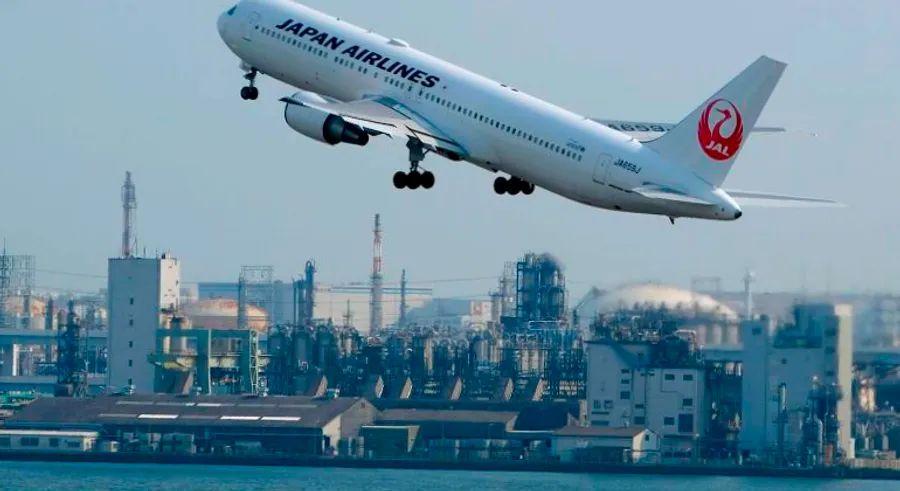Inside the World’s Most Punctual Mega Airport

It’s the nightmare every traveler dreads.
You arrive at the airport early for your multicity flight, already aware that your connection is tight and you’re on a race against time.
You glance at the departure board and see a red light flashing next to your flight number. Delayed. That means you’ll miss your connection and now face the stress of rearranging your entire itinerary.
But for travelers passing through Tokyo’s Haneda Airport, this is a much rarer scenario. That’s because Haneda is one of the most reliable and punctual airports in the world.
Haneda, or Tokyo International Airport, is the fifth busiest airport in the world, with nearly 87 million passengers recorded in 2018. It surpasses major global hubs like Chicago O'Hare (83 million), Heathrow (80 million), and Hong Kong (74.5 million) in passenger traffic.
Despite handling such high traffic, Haneda achieved an impressive 85.6% on-time performance in 2018, making it the most punctual mega airport globally. This is particularly remarkable considering the average on-time rate for airports of its size – with over 30 million departing seats annually – is just 77.1%.
This data comes from aviation analyst OAG, which analyzed 58 million flight records from 2018 to arrive at its conclusions.
Even more impressive is that Haneda has maintained its punctuality streak, earning the title of most punctual mega airport for four consecutive years.
So, how does this bustling Tokyo hub manage such a massive flow of passengers while maintaining efficiency, cleanliness, and a welcoming atmosphere?
The airport’s punctuality can be attributed to the dedication of its staff, who are supported by innovative technologies used throughout the facility.
Baggage Handlers: A Vital Element

On the domestic side, Japan Airlines’ baggage handlers manage around 17,000 bags daily. They play a crucial role in ensuring timely flight operations, with the airline aiming to deliver bags from plane to passenger within 10 minutes.
At the start of each shift, handlers stretch to prevent muscle strain and maintain flexibility.
To enhance efficiency, the airline is testing a new robotic suit, the ATOUN Model Y.
This wearable exoskeleton provides additional support for the lower body, using motors and sensors to predict when assistance is needed. It focuses on the lower back, making luggage feel lighter and reducing the strain on the body. (See the device in action in the video above.)
Kotaru Shintani, ground handling supervisor at Japan Airlines, states, 'With this device, operation speed and accuracy have improved.' He also notes that handlers feel less exhausted by the end of the day.
In a similar effort, Japan Airlines and ATOUN are developing a device to support the arms, aiming to help manage heavier cargo and reduce physical strain, thus expanding their workforce by making the job less physically demanding.
'I take pride in knowing that our efforts help ensure flights depart on time,' says Shintani.
The Significance of Punctuality in Japanese Culture

This dedication to punctuality is reflected throughout the airport, not just in flight operations.
Upon arriving at the international terminal, passengers are welcomed with a distinctly Japanese airport experience.
On the mezzanine level above check-in, there’s a marketplace inspired by early 17th-century Japan, featuring a replica of Nihoni Bridge made from Yoshino cypress wood.
The Edo-style shopping street is home to 30 restaurants offering sushi, yakitori, and oden for travelers in a rush. One of them, Katsusen, specializes in tonkatsu, or breaded pork cutlets, serving up to 300 diners a day, many of whom are pressed for time.
Katsusen's manager, Hideyaki Kimihara, believes that managing pressure comes down to the mindset of the staff. Many workers at Haneda have been raised with the value of punctuality deeply ingrained in them from a young age.
'Japanese people are taught to value punctuality from childhood,' Kimihara explains. 'By the time they reach adulthood, the importance of being on time is firmly etched into their minds.'
More than just punctuality
Punctuality isn't the only reason why frequent travelers favor this airport.
For six consecutive years, Haneda Airport has been awarded a prestigious five-star rating by Skytrax. Out of all airports globally, only 12 have earned this top-tier certification, and Haneda is the only one among the five busiest to receive the “first rate” distinction.
Haneda consistently ranks as the World’s Cleanest Airport, according to Skytrax World Airport Awards, and it was honored with the 'Japan Toilet Award' for its spotless, accessible facilities.
In the 2019 Skytrax World’s Best Airport rankings, Haneda climbed to second place, up one spot from the previous year. It also won accolades for Best Domestic Airport and for providing top-notch facilities for passengers with reduced mobility.
Haneda's convenience is unmatched, located less than 30 minutes by train from Tokyo Station, the city's central hub. In contrast, Narita Airport, Tokyo's other major airport, is an hour's ride away.
A rise in traffic
Currently, Haneda serves 49 domestic airports, with 80% of its passengers being locals.
With the Tokyo 2020 Olympics just around the corner, there are ambitious plans to boost international tourism, with Haneda expected to be a major player in welcoming visitors.
The Japan National Tourism Organization is targeting 40 million visitors in 2020, nearly four times the 2013 total. To accommodate the surge, Haneda is introducing 50 new international routes and expanding its terminals.
The real challenge for Haneda will be sustaining its high standards as passenger numbers continue to soar.

1

2

3

4

5
Evaluation :
5/5